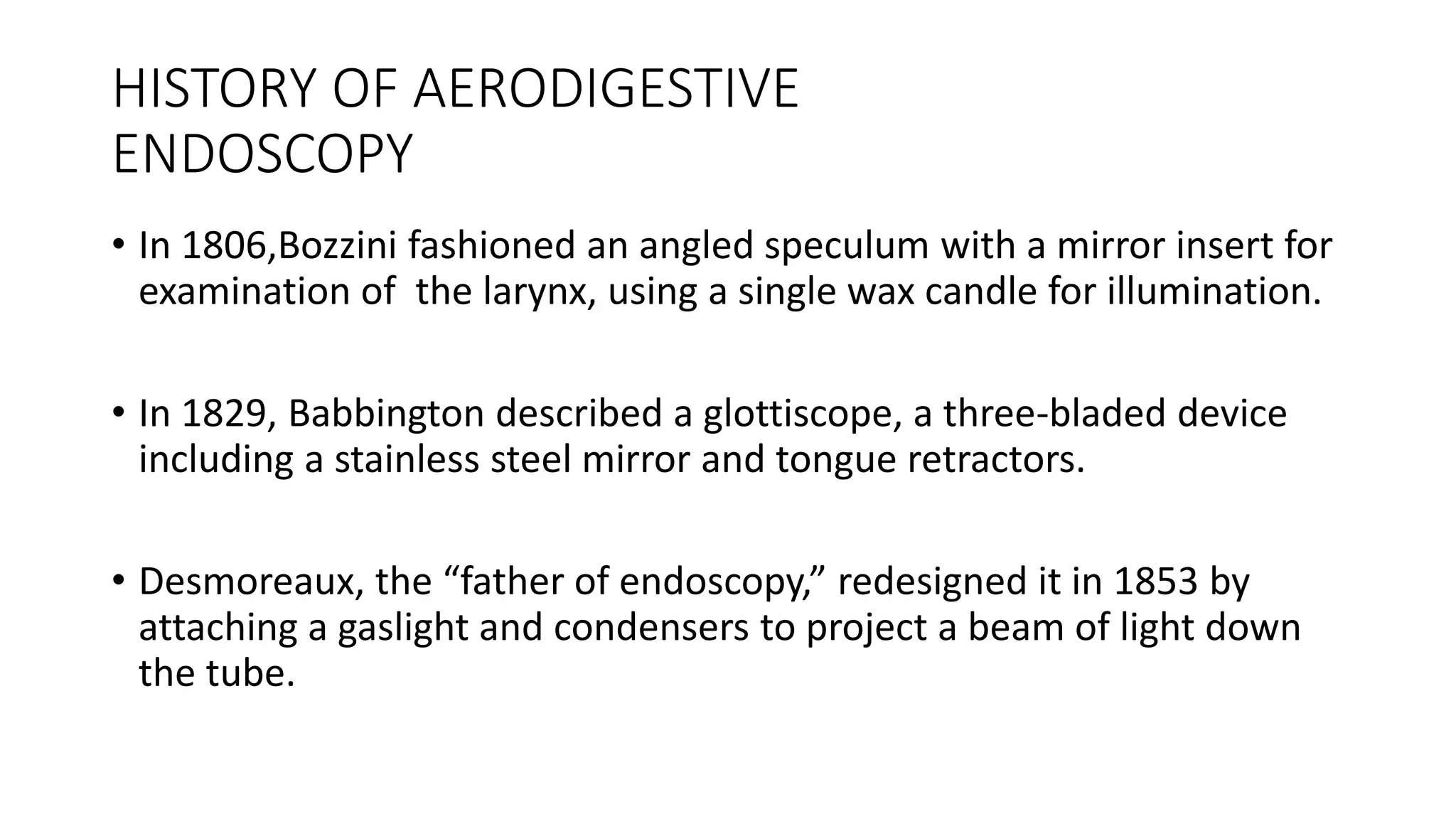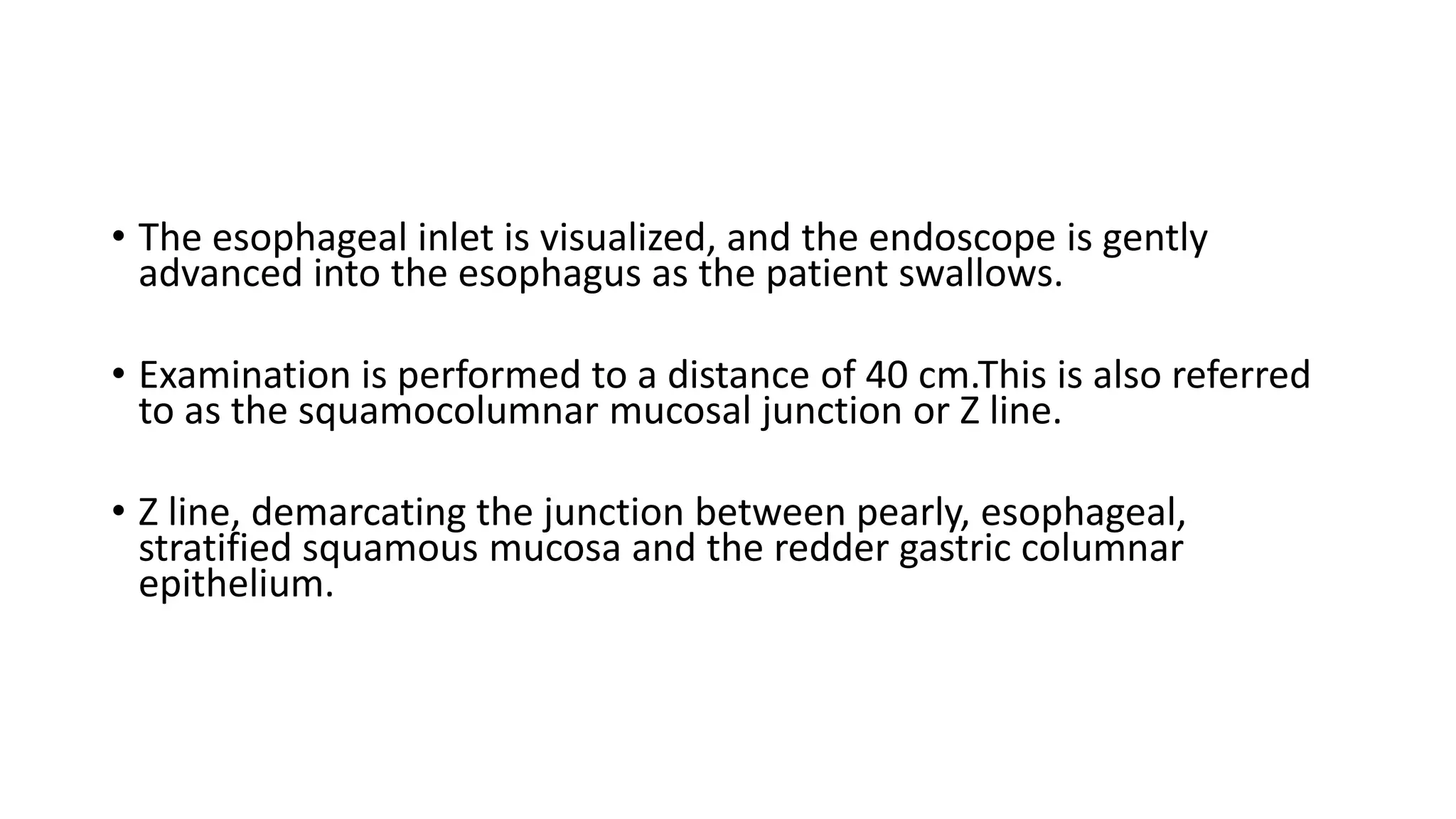The document provides a history of the development of endoscopy of the esophagus and related structures. It describes innovations from the early 19th century using candles for illumination to the modern development of flexible fiberoptic endoscopy in the 1960s. It also summarizes the anatomy of the esophagus including its parts, walls, blood supply, lymphatics and innervation. Finally, it discusses techniques for rigid and flexible esophagoscopy along with potential complications.












































